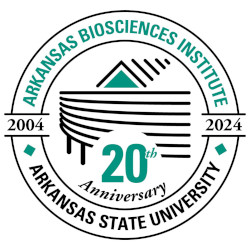Intracellular trafficking and glycosylation of hydroxyproline-O-glycosylation module in tobacco BY-2 cells is dependent on medium composition and transcriptome analysis
Document Type
Article
Publication Title
Scientific reports
PubMed ID
37598266
MeSH Headings (Medical Subject Headings)
Nicotiana (genetics); Glycosylation; Hydroxyproline; Plant Cells; Gene Expression Profiling
Abstract
Expression of recombinant proteins in plant cells with a "designer" hydroxyproline (Hyp)-O-glycosylated peptide (HypGP), such as tandem repeats of a "Ser-Pro" motif, has been shown to boost the secreted protein yields. However, dramatic secretion and Hyp-O-glycosylation of HypGP-tagged proteins can only be achieved when the plant cells were grown in nitrogen-deficient SH medium. Only trace amounts of secreted fusion protein were detected in MS medium. This study aims to gain a deeper understanding of the possible mechanism underlying these results by examining the intracellular trafficking and Hyp-O-glycosylation of enhanced green fluorescent protein (EGFP) fused with a (SP) tag, consisting of 32 repeats of a "Ser-Pro" motif, in tobacco BY-2 cells. When cells were grown in MS medium, the (SP)-EGFP formed protein body-like aggregate and was retained in the ER, without undergoing Hyp-O-glycosylation. In contrast, the fusion protein becomes fully Hyp-O-glycosylated, and then secreted in SH medium. Transcriptome analysis of the BY-2 cells grown in SH medium vs. MS medium revealed over 16,000 DEGs, with many upregulated DEGs associated with the microtubule-based movement, movement of subcellular component, and microtubule binding. These DEGs are presumably responsible for the enhanced ER-Golgi transport of HypGP-tagged proteins, enabling their glycosylation and secretion in SH medium.
First Page
13506
DOI
10.1038/s41598-023-40723-3
Publication Date
8-19-2023
Recommended Citation
Karki, Uddhab; Perez Sanchez, Paula; Chakraborty, Sankalpa; Dickey, Berry; Vargas Ulloa, Jacqueline; Zhang, Ningning; and Xu, Jianfeng, "Intracellular trafficking and glycosylation of hydroxyproline-O-glycosylation module in tobacco BY-2 cells is dependent on medium composition and transcriptome analysis" (2023). Arkansas Biosciences Institute. 14.
https://arch.astate.edu/abi/14


